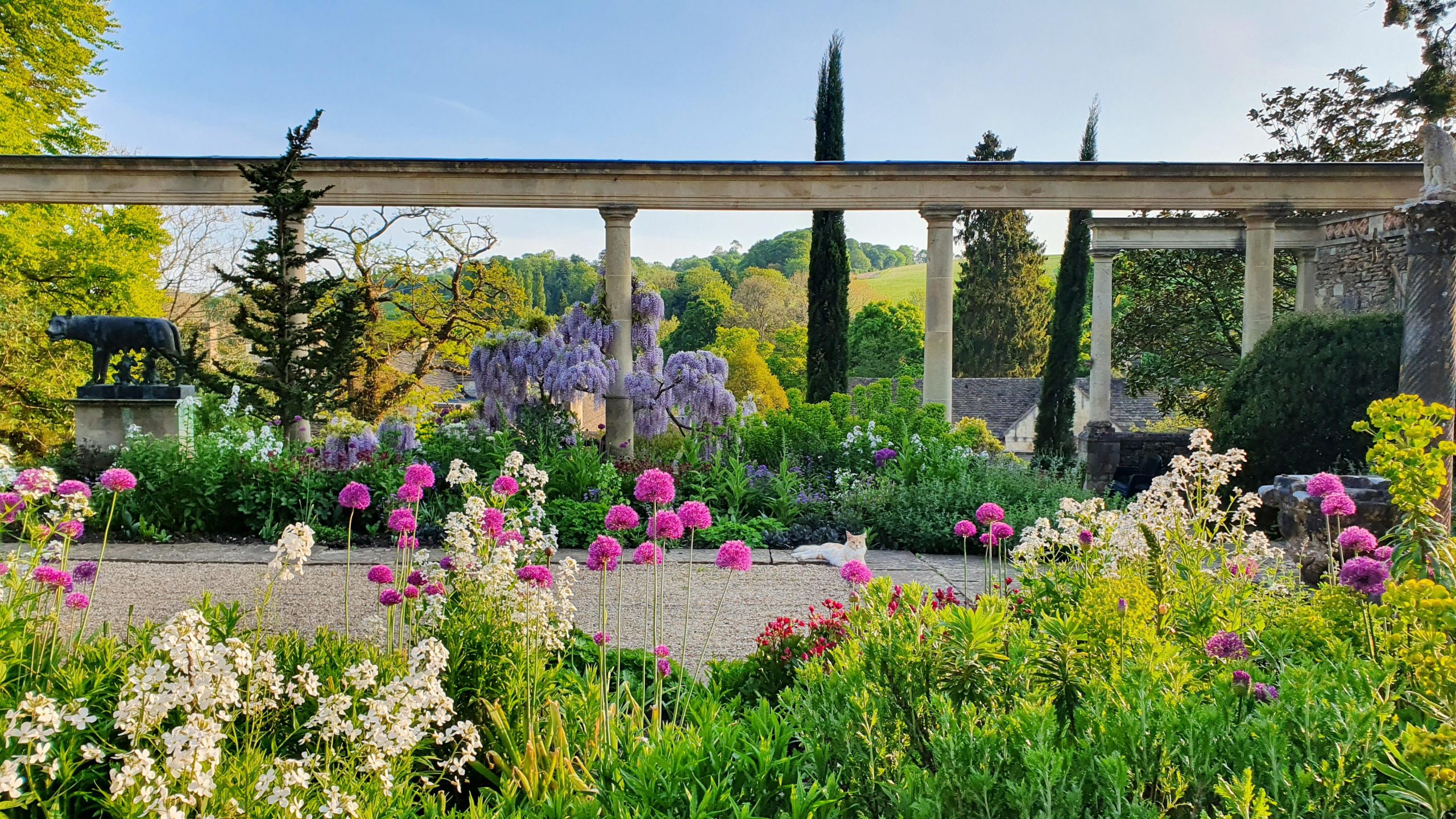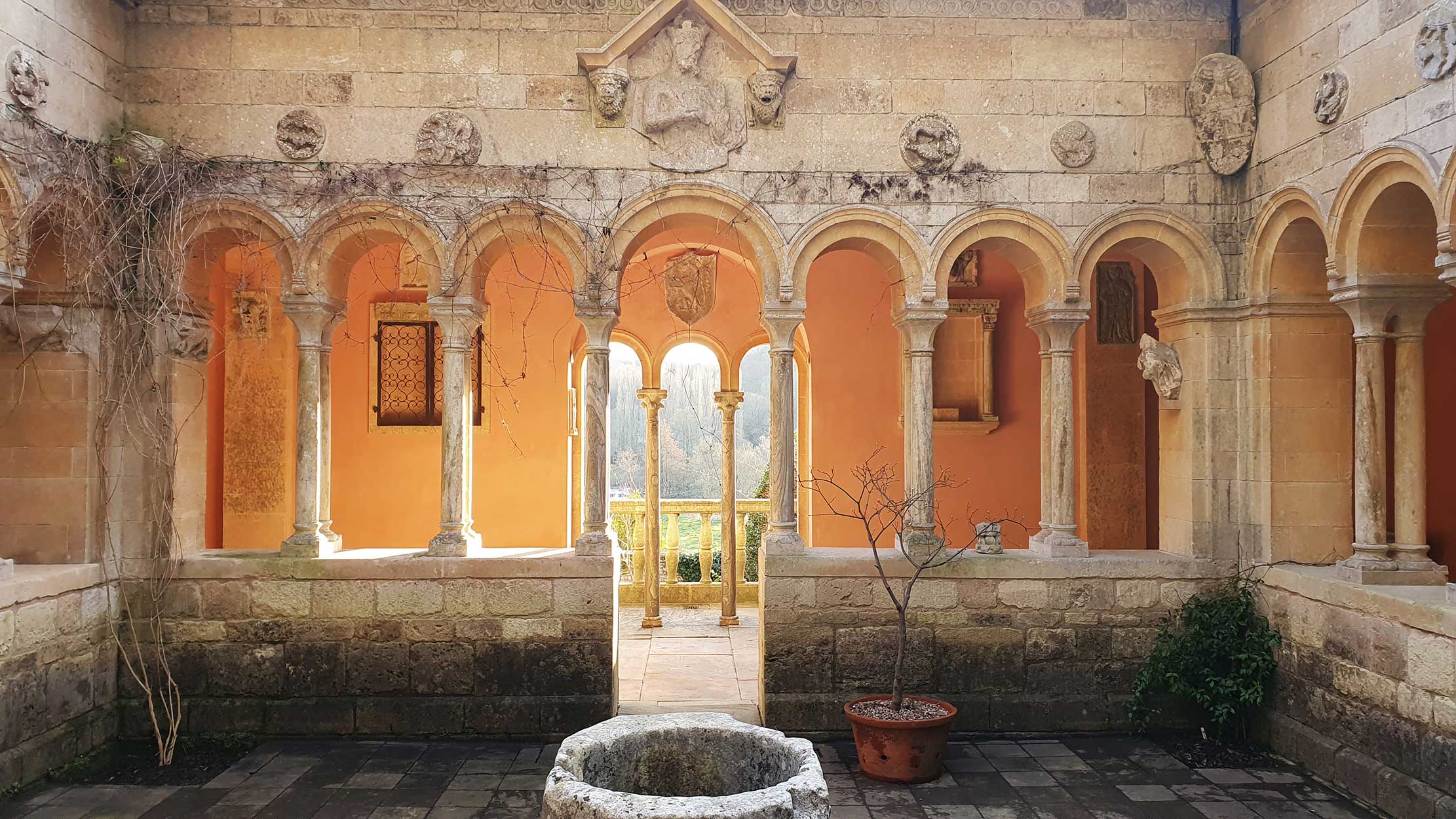Iford Manor: How to introduce modern touches into a historic garden
Nowhere are Harold Peto’s talents as a gardener and architect more apparent than the gardens and grounds of Iford Manor, so new additions need to respect the spirit of the place.


A garden is not an object, it is a process and cannot be understood at a single moment. In common with all historic gardens, traces of the past build upon traces of the past. These laminas of history require careful peeling back if we are to understand the layering of time and interventions made. As the great landscape architect Sir Geoffrey Jellicoe said, ‘we should ponder on the past not as the past, but as a pointer to the future.'
The question is how to introduce flora and something of the modern into this historic setting. Great care needs to be exercised so that changes do not inadvertently erode Iford’s distinct style and atmosphere. It is not only the choice and placing of individual plants that keep the garden alive; the ‘spirit of the place’ is equally, if not more, important to perpetuate.
Peto the architect gave the garden at Iford a strong architectural structure, which remains today, but the evidence of Peto the gardener is less obvious and, therefore, more difficult to articulate. Within the framework of masonry, Nature rather than gardener is allowed to be master. It is not horticultural excellence that is necessarily on view, but rather the orchestration of dappled greens, the play of light and the passing of time at which Peto and Iford excel.
For Peto, gardens were about evoking moods and, at Iford, he laid out the garden as a series of moments. It may be an idea of Tuscany — not modern Tuscany, but the poor, agrarian Tuscan landscape with tumbled-down walls and scented herbs.
It may be an allusion to a grand villa with loggia, it may be a light-filled courtyard garden of Córdoba or an Oriental garden, still, quiet with an air of ancient peace. Peto did not try to separate these conflicting aesthetics from different continents and times, instead, he rooted them firmly into the local vernacular, mixing old and new, Nature and the manmade and the formal with the informal.
Once this spirit is understood, the next step is to devise an appropriate palette for each space and for the whole, followed by a planting plan. A successful scheme relies primarily on form and shape — both the outline shape and also the individual flower shape.
"It is this constant ebb and flow of plants emerging, flowering, and fading, to be replaced by another that is the key in a harmonious and successful scheme"
Differing leaf shapes and textures add another dimension when building up a planting design. Bold, large leaves add impact and provide a resting place for the eye, whereas thin, strappy leaves have a diaphanous, transparent quality and a sense of movement. This detailing holds the attention.
Exquisite houses, the beauty of Nature, and how to get the most from your life, straight to your inbox.
A garden is a collection of habitats and, as such, I look to Nature to provide the clues for creating dynamic, interesting and successful planting recipes. Nature’s tidal movements generate a succession of seasonal effects of magical quality.
It is this constant ebb and flow of plants emerging, flowering, and fading, to be replaced by another that is the key in a harmonious and successful scheme. In Nature, the simplest schemes can be the most memorable and, in a large and diverse garden such as Iford, such schemes can be re-created.
Having gardened most of my life on clay, spring became my usual planting time. Traditionally, however, if the soil were more loamy, sandy, or even stony as it is at Iford, autumn planting would be preferable.
This year we had three planting priorities: firstly, to grow a range of ephemerals that we could use, sacrificially if necessary, to fill gaps and to introduce some cohesion across the garden. Among other things, we have sown Bupleurum rotundifolium, agrostemma (the true wild form), Cichorium intybus, Galactites tomentosa and Hibiscus trionum. You will see I have deliberately chosen species.
Our second priority was to plant structural plants that, in time, will form the woody framework of the future: Cupressus sempervirens, Phillyrea angustifolia, Cercis siliquastrum, Osmanthus x burkwoodii and various sub-shrubs, such as lavandula, rosmarinus, phlomis, pittosporum and cistus.
Our final priority was to do more with containers. Pots have the great advantage of providing a smear of colour exactly where it’s needed. Within the garden, we filled old terracotta pots with various bulbs, such as Narcissus ‘Elka’, ‘Petrel’ and ‘Segovia’. These were replaced in late May with various salvias and pelargoniums. On a larger scale, we are using cork oak, Quercus suber, in the courtyard of our cafe and restaurant.

Iford Manor: How Harold Peto created a Wiltshire masterpiece that 'that turns the ordinary into the extraordinary'
Troy Scott-Smith, head gardener at Iford Manor, tells the tale of how the great Harold Peto found Iford and used

The stone-by-stone project to rescue the cloisters at Iford Manor: 'We've saved it from collapse'
One of Wiltshire's prettiest houses, Iford Manor, has been recognised by Historic Houses for its fabulous restoration of the medieval-style
